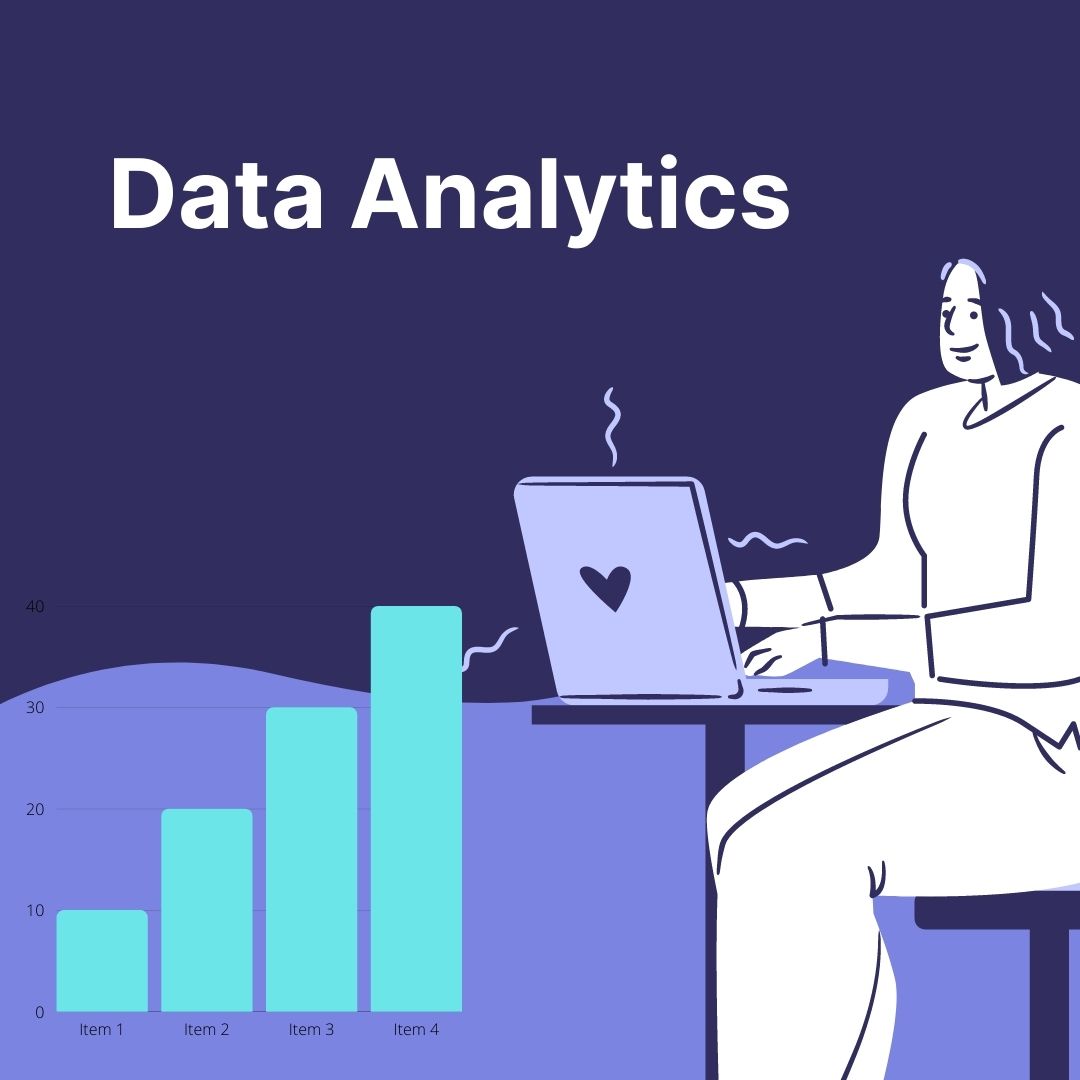
Data Analytics is the science of incorporating quantitative and qualitative techniques using Mathematics, Programming, Statistics, and Machine Learning into the extraction of “Raw Data”. This data when processed serves a very crucial role in supplementing the business’ growth by identifying certain key metrics. These key metrics help businesses gain a deeper insight into their ad campaign evaluations, understanding customer requirements and improving the workforce’s performance.
According to Fortune Business Insights™, the global data integration and integrity software market size stood at USD 7,920.7 Mn in 2018 and projected to reach USD 20,044.9 Mn by the end of 2026, exhibiting a CAGR of 12.5% during the forecast period from 2019-2026. Therefore, Data Analytics allows potential, striving, and thriving businesses to hand-pick and optimize relevant information that would otherwise be lost.
Types of Data Analytics and their Applications across various sectors
Data Analytics is mainly classified into 4 categories, i.e., Descriptive, Diagnostic, Predictive, and Prescriptive Analytics. Each classification has its own purpose and is applicable to only specific sectors of a business. Each of the types is described below in greater detail.
Descriptive Analytics
This mode of analytics helps the staff identify the exact impact on a business’ growth. The processes used in such Analytics summarize heaps of data to help the management, stakeholders, and staff better understand the outcomes and how it happened. Incorporating KPIs such as return on investment into strategies can help monitor any business’ performance. For this process to be successfully executed, the organization should have a collection of relevant data and should carry-out thorough processing using Data Analysis and Data Visualization. This process is mainly used to draw a comparison between the organization’s present and past performances.
Diagnostic Analytics
This process helps one identify and understand the reasons behind the impact on a business’ growth. This process leverages the results from the relatively basic descriptive analytics and further digs deeper in order to find the underlying cause. Unlike descriptive analytics, this process provides an in-depth analysis of a particular problem. For this process to be successfully executed, the organization should have a collection of relevant data and should carry-out thorough processing using Data Analysis and Data Visualization. This process is mainly used to draw a comparison between the organization’s present and past performances.
Predictive Analytics
Predictive Analytics gives information regarding what is going to happen in the near future. The findings of the descriptive and diagnostic analytics are utilized by it for forecasting future trends for various sectors like Marketing, Finance, etc. This mode of analytics utilizes advanced sciences like Machine Learning that enables forecasting.
Prescriptive Analytics
Just like the name, this type of analytics provides the exact approach that the organization should take in order to eliminate any crippling issues in the future or to shape the business model as per a promising trend.
Application & Career Scope of Data Analytics in the Future
As of today, Data Science is being widely used in sectors such as Business, Healthcare, Finance, and Education. Moreover, as the data is ever-increasing, it will require advanced tools to analyze such a huge mass of information. Big Data has completely revolutionized the way we handle, analyze, and utilize data. Leveraging a zero-maintenance data pipeline platform can significantly enhance the efficiency of data analysis processes. A real-world example where Data Analytics helped businesses is that of Coca-Cola in 2015.
The multinational conglomerate retained its customer base by building a loyalty program that strengthened its data strategy. Thus, the art of gathering and utilizing data is crucial as it can serve in diverse fields from understanding purchase patterns of customers in marketing to filtering piles of data that in-turn helps in estimating the viability of treatments or the possibility of pandemics.
Data Science has been constantly incorporating relatively new technical fields like Machine Learning and BlockChain. Thus, data science is constantly evolving and thus proves to be a promising field as it will continue to expand among such fields and thus flourish across industries. Therefore, investing one’s time and money to seek formal training for this discipline will definitely not go in vain.
As of 2020, the field now provides career opportunities in various high-paying roles like Data Architect, Machine Learning Scientist, Data Analyst, Applications Architect, etc. The ever-growing demand for such roles lands the aspirants with utilizing their technical acumen for advanced purposes in the field. Such professionals will always be in demand as they possess the cumulative set of proficiencies required to help prosper the business through data-driven solutions. Let alone private industries, many government sectors also leverage the science of big data to cater to their citizens as well as protect their identities.
Thus, this craft is not going to die soon with its ever-growing applications and job opportunities. Hence, it will be apt to say that Data Science is going to be the hot skill of the year 2021. The data obtained is used by almost every division within the organization. In the coming future, businesses will eagerly look for people with a working knowledge of this skill.
Thus, being equipped with these relevant skills and gaining extensive experience in the field through these esteemed programs and universities would surely set the students on the path of professional growth and success. Companies like Facebook, Instagram, and Netflix in order to supplement their drive to innovate, are constantly on the lookout for such applicants.
Write and Win: Participate in Creative writing Contest & International Essay Contest and win fabulous prizes.


